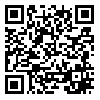Volume 12, Issue 3 (9-2022)
J Health Saf Work 2022, 12(3): 664-679 |
Back to browse issues page
Download citation:
BibTeX | RIS | EndNote | Medlars | ProCite | Reference Manager | RefWorks
Send citation to:



BibTeX | RIS | EndNote | Medlars | ProCite | Reference Manager | RefWorks
Send citation to:
Souri S, Amerzadeh M, Kalhor R, Rafiei S. The Relationship Between Anxiety, Stress and Protective Behavior in Nurses During COVID -19 Pandemic. J Health Saf Work 2022; 12 (3) :664-679
URL: http://jhsw.tums.ac.ir/article-1-6747-en.html
URL: http://jhsw.tums.ac.ir/article-1-6747-en.html
The Relationship Between Anxiety, Stress and Protective Behavior in Nurses During COVID -19 Pandemic
1- Student Research Committee, School of Health, Qazvin University of Medical Sciences, Qazvin, Iran
2- Social Determinants of Health Research Center, Research Institute for Prevention of Non-Communicable Diseases, Qazvin University of Medical Sciences, Qazvin, Iran
3- Social Determinants of Health Research Center, Research Institute for Prevention of Non-Communicable Diseases, Qazvin University of Medical Sciences, Qazvin, Iran ,sima.rafie@gmail.com
2- Social Determinants of Health Research Center, Research Institute for Prevention of Non-Communicable Diseases, Qazvin University of Medical Sciences, Qazvin, Iran
3- Social Determinants of Health Research Center, Research Institute for Prevention of Non-Communicable Diseases, Qazvin University of Medical Sciences, Qazvin, Iran ,
Abstract: (1711 Views)
Introduction: Health workers, especially nurses, are facing a high risk of contracting the COVID-19 and consequent mental disorders such as stress, anxiety and depression. We aimed to study the relationship between anxiety, stress and the protective behavior of nurses during the Covid-19 pandemic.
Material and Methods: This cross-sectional study was conducted on nurses working in COVID -19 referral hospitals in Qazvin, Iran, in 2020. Out of 645 nurses working in two hospitals, 260 of them were selected randomly. Three questionnaires including demographic and contextual information, COVID-19 anxiety, stress and precautionary behaviors against COVID-19 were used. Descriptive statistical methods, Pearson correlation, t-test and one-way analysis of variance and binary logistic regression analysis were applied at 95% confidence interval.
Results: The prevalence of anxiety symptoms in nurses was 32.08%, the mean score of protective behavior was 18.45+5.66 and the maximum score was 22.06+4.7. The negative relationship between anxiety and nurses precautionary behavior) β=-0.36, P<0.05) and the significant effect of COVID-19 stress on nurses’ behavior) β=-0.22, P<0.05) were confirmed. Furthermore, adding stress as an interfering factor, affirmed the mediating role of stress in the relationship between anxiety and nurses’ precautionary behavior (β=-0.18, P<0.05). Nurses under 35 years of age were more likely (OR=1.62, P=0.004) to follow the protective rules; those with 6 to 10 years of hospital experience were respectively 32 times and 37 times more probable to use personnel protective equipment (PPE) (OR=1.32, P=0.002) .
Conclusion: The probability of effective use of PPE and observance of protective guidelines among nurses with severe and very severe anxiety levels was less than their counterparts. While in those with controlled level of stress level such obedience was much more probable. Therefore, all health service providers, need to develop supportive programs to emphasize on the promotion of employees’ mental health.
Material and Methods: This cross-sectional study was conducted on nurses working in COVID -19 referral hospitals in Qazvin, Iran, in 2020. Out of 645 nurses working in two hospitals, 260 of them were selected randomly. Three questionnaires including demographic and contextual information, COVID-19 anxiety, stress and precautionary behaviors against COVID-19 were used. Descriptive statistical methods, Pearson correlation, t-test and one-way analysis of variance and binary logistic regression analysis were applied at 95% confidence interval.
Results: The prevalence of anxiety symptoms in nurses was 32.08%, the mean score of protective behavior was 18.45+5.66 and the maximum score was 22.06+4.7. The negative relationship between anxiety and nurses precautionary behavior) β=-0.36, P<0.05) and the significant effect of COVID-19 stress on nurses’ behavior) β=-0.22, P<0.05) were confirmed. Furthermore, adding stress as an interfering factor, affirmed the mediating role of stress in the relationship between anxiety and nurses’ precautionary behavior (β=-0.18, P<0.05). Nurses under 35 years of age were more likely (OR=1.62, P=0.004) to follow the protective rules; those with 6 to 10 years of hospital experience were respectively 32 times and 37 times more probable to use personnel protective equipment (PPE) (OR=1.32, P=0.002) .
Conclusion: The probability of effective use of PPE and observance of protective guidelines among nurses with severe and very severe anxiety levels was less than their counterparts. While in those with controlled level of stress level such obedience was much more probable. Therefore, all health service providers, need to develop supportive programs to emphasize on the promotion of employees’ mental health.
Type of Study: Research |
Received: 2022/09/25 | Accepted: 2022/09/1 | Published: 2022/09/1
Received: 2022/09/25 | Accepted: 2022/09/1 | Published: 2022/09/1
Send email to the article author
| Rights and permissions | |
 |
This work is licensed under a Creative Commons Attribution-NonCommercial 4.0 International License. |







